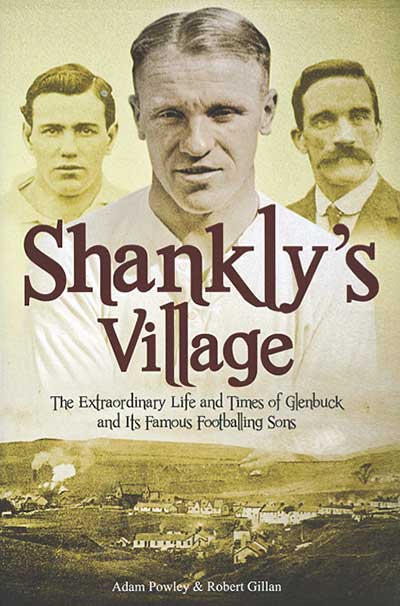 The extraordinary life and times of Glenbuck and its famous sons
The extraordinary life and times of Glenbuck and its famous sons
by Adam Powley and Robert Gillan
Pitch Publishing, £18.99
Reviewed by Graham McColl
From WSC 348 February 2016
With the Scottish football landscape currently ravaged almost beyond repair and Gordon Strachan, our jokey, England-based national-team manager telling us that Ikechi Anya and Scott Brown are talents to be reckoned with, it seems timely to be transported back to the village of Glenbuck. This was Bill Shankly’s childhood home and one that symbolises a footballing epoch – a century or so from the late Victorian era to the late 20th century – when Scotland produced reams of talented players from tight-knit working-class towns and villages, united by dangerous work in industry and an obsession with football.
Glenbuck, a tiny Ayrshire outpost, produced, proportionately, an even higher than average share of Scottish footballers, thanks to its isolation, its intense, competitive environment and the rugged interdependency, transferred from pit to pitch, of the miners that made it their home. Symbolically, the village is now gone, erased along with Britain’s mining industry and the framework that built the character of Shankly, that most iconic of Liverpool managers.
Despite the teasing title, it takes a long time for the man himself to materialise fully in the text’s midst – almost two-thirds of the way through the book and, it has to be said, it can be rather heavy going up until that point as the reader is bombarded with much stonily presented, fact-based research relating to Scotland’s industrial, political and social history and the very earliest days of football in Scotland – and England – written in a style akin to that of a compulsory set text.
When we finally move on to Bill the book comes alive, with insights from Shankly’s younger days. “‘I maybe shouldn’t say this,’ says Tom Hazle [an irreverent and lively 89-year-old], one of the last surviving Glenbuckians, and who would remember [the village’s] street-corner gatherings so well, ‘but if someone said, “Oh here’s Wullie [Bill] Shankly” a few would have walked away. Wullie could talk for sure and it was interesting but he would have taken over the conversation. He liked to be the centre of attention.’” This contrasts nicely with the idea of the garrulous legend who went among the people of Liverpool and had them hanging on his every word.
Another anecdote reveals how, when Liverpool manager and on a holiday visit home, Shankly was taken “against his will” to watch a local match involving Muirkirk Juniors and featuring a player whom the locals regarded as a prospect. “The fella with the blond hair?” Shankly says of the youngster at half time. “He plays away fine until he gets the ball.”
The authors certainly believe in leaving the best until last. Following the chapters focusing on Shankly himself, we have Ian St John and Ian Callaghan reminiscing on Liverpool FC in the 1960s and 1970s, always fun, followed by an evocative chapter on everyday life in Glenbuck that leaves the reader with a lively, insightful and clear picture of the village’s life. There is some excellent stuff here but, had the book been slimmed down to concentrate solely on Shankly and his village, it would have proved a weightier tome.